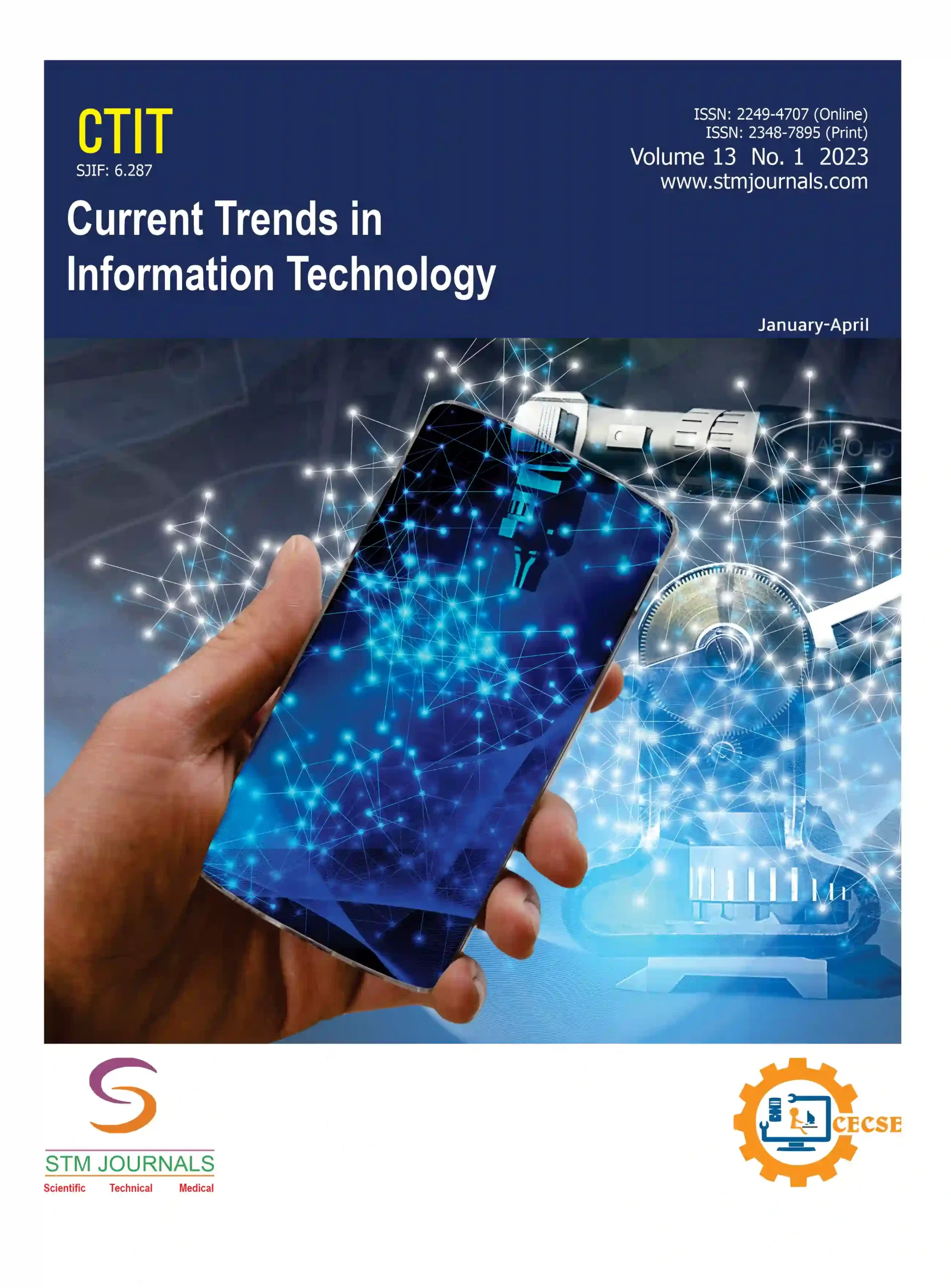This is an unedited manuscript accepted for publication and provided as an Article in Press for early access at the author’s request. The article will undergo copyediting, typesetting, and galley proof review before final publication. Please be aware that errors may be identified during production that could affect the content. All legal disclaimers of the journal apply.
Shubham Chaube,
- Research Scholar, MCA, Thakur Institute of Management Studies, Career Development & Research (TIMSCDR) Mumbai, Maharashtra, India
Abstract
Healthcare IT innovations are transforming medical services by enhancing diagnostics, improving patient management, and optimizing resource utilization. The integration of advanced technologies has led to significant improvements in healthcare delivery, enabling more accurate diagnoses, efficient treatments, and seamless data management. One of the most impactful advancements is Electronic Health Records (EHR), which facilitate centralized patient data storage, allowing healthcare providers to access and update records in real-time. Telemedicine has revolutionized remote patient care, enabling virtual consultations, reducing hospital visits, and improving healthcare accessibility in rural areas. Additionally, Artificial Intelligence (AI) plays a crucial role in diagnostics and personalized medicine by analyzing vast amounts of medical data to detect diseases early and recommend tailored treatments. The Internet of Things (IoT) enhances real-time monitoring through wearable devices and smart sensors, allowing continuous health tracking and proactive interventions. Meanwhile, blockchain technology ensures secure data management, protecting patient information from cyber threats and improving interoperability among healthcare systems. Despite these advancements, challenges such as data privacy concerns, interoperability issues, and cost barriers hinder widespread adoption. This study explores strategies to overcome these challenges and examines emerging technologies like quantum computing, robotics, and augmented reality, which have the potential to revolutionize healthcare. By analyzing current literature and real-world applications, this study provides actionable insights for implementing secure and efficient healthcare IT systems.
Keywords: IoT, telemedicine, emerging technologies, cloud computing, wearable medical technologies
[This article belongs to Current Trends in Information Technology ]
Shubham Chaube. Innovations in Healthcare IT for Enhanced Patient Outcomes. Current Trends in Information Technology. 2025; 15(02):19-23.
Shubham Chaube. Innovations in Healthcare IT for Enhanced Patient Outcomes. Current Trends in Information Technology. 2025; 15(02):19-23. Available from: https://journals.stmjournals.com/ctit/article=2025/view=209375
References
- Kuo MH. Opportunities and challenges of cloud computing to improve health care services. J Med Internet Res. 2011 Sep 21; 13(3): e1867.
- Butpheng C, Yeh KH, Xiong H. Security and privacy in IoT-cloud-based e-health systems—A comprehensive review. Symmetry. 2020 Jul 17; 12(7): 1191.
- Groves P, Kayyali B, Knott D, Kuiken SV. The ‘big data’ revolution in healthcare: Accelerating value and innovation. McKinsey & Company; 2013.
- Hofer IS, Halperin E, Cannesson M. Opening the black box: understanding the science behind big data and predictive analytics. Anesth Analg. 2018 Nov 1; 127(5): 1139–43.
- Vagal A, Saba L. Artificial intelligence in “Code Stroke”—a paradigm shift: do radiologists need to change their practice? Radiol Artif Intell. 2022 Jan 19; 4(2): e210204.
- Kashyap V, Kumar A, Kumar A, Hu YC. A systematic survey on fog and IoT driven healthcare: open challenges and research issues. Electronics. 2022 Aug 26; 11(17): 2668.
- Bodkhe U, Tanwar S, Parekh K, Khanpara P, Tyagi S, Kumar N, Alazab M. Blockchain for industry 4.0: A comprehensive review. IEEE Access. 2020 Apr 17; 8: 79764–800.
- Xie Y, Lu L, Gao F, He SJ, Zhao HJ, Fang Y, Yang JM, An Y, Ye ZW, Dong Z. Integration of artificial intelligence, blockchain, and wearable technology for chronic disease management: a new paradigm in smart healthcare. Curr Med Sci. 2021 Dec; 41(6): 1123–33.
- Rawat B, Joshi Y, Kumar A. AI in healthcare: opportunities and challenges for personalized medicine and disease diagnosis. In 2023 IEEE 5th International Conference on Inventive Research in Computing Applications (ICIRCA). 2023 Aug 3; 374–379.
- Iroju O, Soriyan A, Gambo I, Olaleke J. Interoperability in healthcare: benefits, challenges and resolutions. Int J Innov Appl Stud. 2013 May 1; 3(1): 262–70.
- Ur Rasool R, Ahmad HF, Rafique W, Qayyum A, Qadir J, Anwar Z. Quantum computing for healthcare: A review. Future Internet. 2023 Feb 27; 15(3): 94.
- Chopra H, Baig AA, Cavalu S, Singh I, Emran TB. Robotics in surgery: Current trends. Ann Med Surg. 2022 Sep 1; 81: 104375.
- Michaud TL, Pereira E, Porter G, Golden C, Hill J, Kim J, Wang H, Schmidt C, Estabrooks PA. Scoping review of costs of implementation strategies in community, public health and healthcare settings. BMJ open. 2022 Jun 1; 12(6): e060785.
- Gaonkar AS, Rath S, SR JM, Vaman RS, Das A, Singh D, Kaur P, Manal S, Yadav S, Dave S, Tawde AA. Transforming medical diagnosis: a comprehensive review of AI and ML technologies. Evidence Public Health. 2025; 1(1): 112–128.
- Chandan RC, Sai PP, Palacherla SS, Nisha KL, Amma CU, Dhinesh NL. IoT-Based Post-Surgical Monitoring System for Medical Rehabilitation. In 2023 IEEE Fifth International Conference on Advances in Electronics, Computers and Communications (ICAECC). 2023 Sep 7; 1–8.

Current Trends in Information Technology
| Volume | 15 |
| Issue | 02 |
| Received | 06/03/2025 |
| Accepted | 25/04/2025 |
| Published | 03/05/2025 |
| Publication Time | 58 Days |
PlumX Metrics
